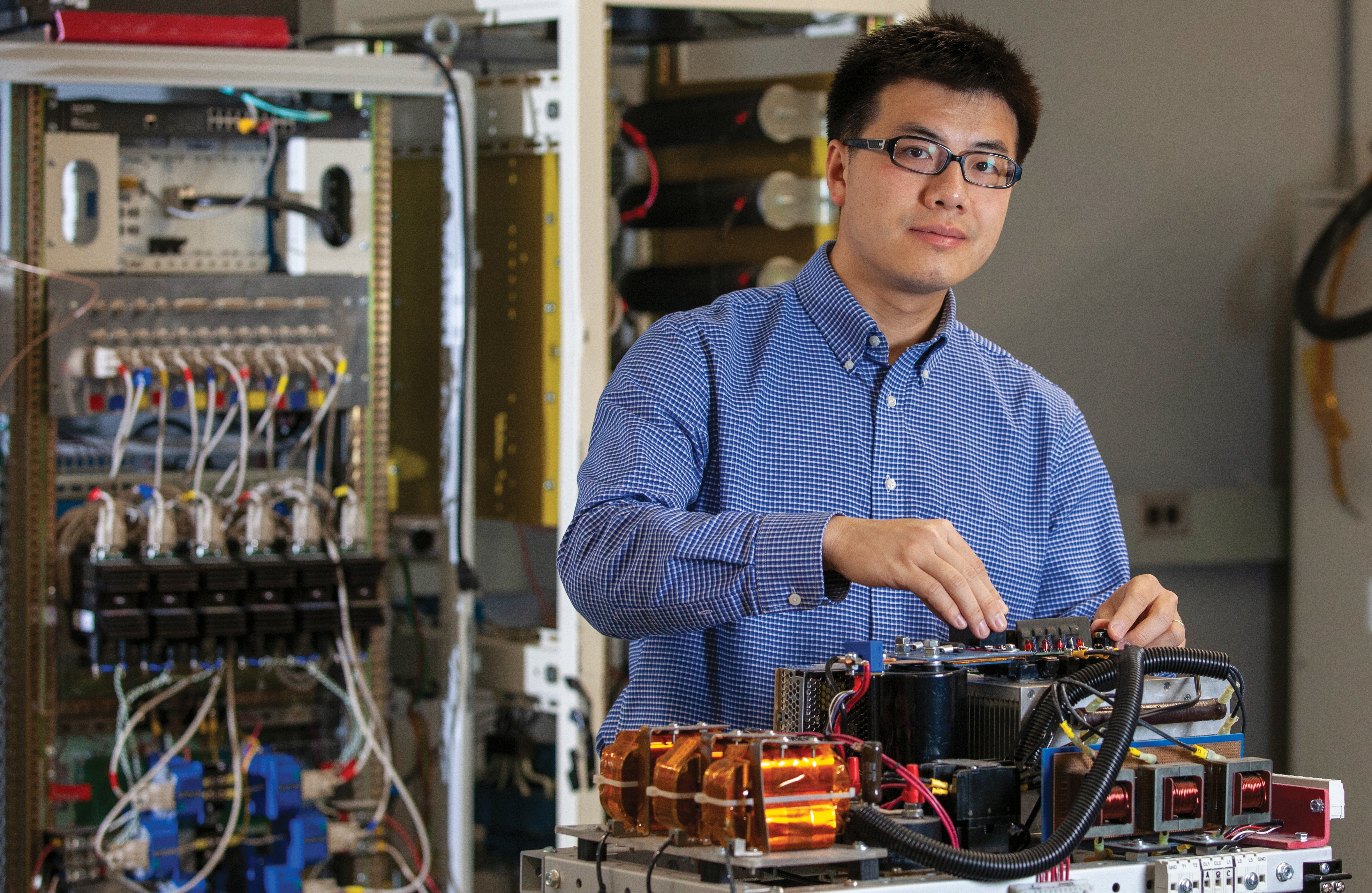New Faculty Member: Dong Dong
Modularity and electrification: meeting current and future demands
May 20, 2019

- Joined ECE August 2018 as Assistant Professor
- Research scientist, GE Global Research Center, 2012-2018
- Research assistant, Center for Power Electronics Systems, 2007-2012
- Ph.D., electrical engineering, Virginia Tech, 2012
- M.S., electrical engineering, Virginia Tech, 2007
- B.S., electrical engineering and automation, Tsinghua University, Beijing, 2007
From the power grid to public transportation to the family car—we’re due for an electronics upgrade.
Dong Dong, an assistant professor in ECE, is developing high-power high-frequency power electronics components, controls, and systems to enable a sprawling multi-decade, multi-industry infrastructure upgrade.
Many components on the power grid, for instance, have been deployed for almost a century, and Dong foresees “a huge opportunity for us to replace aging assets with our research outcomes.”
Integrating, managing, and storing renewable energy resources across every sector of the grid is a formidable challenge, said Dong. Power conversion systems connect renewable resources to the grid, and Dong is working closely with power systems experts to combine cutting-edge technologies in both fields. They are developing new tools to help accelerate the transition from the traditional grid to a new grid that could be composed almost entirely of renewable assets.
Dong is also working on systems that can take full advantage of energy from renewable assets. For example, microgrids, electronic energy routers, and solid-state power substations—which are composed of innovative power electronics, sensors, and cyber solutions—can reduce complexity, increase efficiency, and add functionality and security.
The trend of electrification is lighting up applications in many other sectors of society, notably electric vehicles—cars, planes, trains, and boats. By replacing the mechanical components with power electronics systems, we can distribute propulsion components, shrink engine size, and cut carbon dioxide emissions, said Dong.
Modular high-frequency power electronics
According to Dong, industry engineers have traditionally used high-voltage devices with slower switching speeds to build the large power conversion system for high-power applications, said Dong. His research on wide-bandgap semiconductors and their applications is pushing the boundaries on high-power applications.
“These devices make your system respond faster and react to load demand quickly and precisely,” said Dong. “Wide-bandgap devices have a much lower switching loss, so efficiency improves, and will ultimately help reduce cooling system cost, size, and complexity.”
In his work, Dong uses a modular approach. He steers clear of designing “gigantic systems,” and focuses on breaking a system down into modular pieces.
“With the modular approach, we can move on to medium- to high-voltage high-power conversion applications with what we learned from high-frequency switching power supplies,” said Dong.
“We can optimize submodules and build larger high-power high-voltage systems—like LEGO® blocks.” And this modularity will make system design easier.
“It allows us to decouple system complexities and improve development cycles.”
The risks and costs associated with each project are also reduced, and “we can apply the same modules for various applications with different requirements for frequencies and power levels,” said Dong. “We can even populate the entire electric power system in the future with such an approach.”


